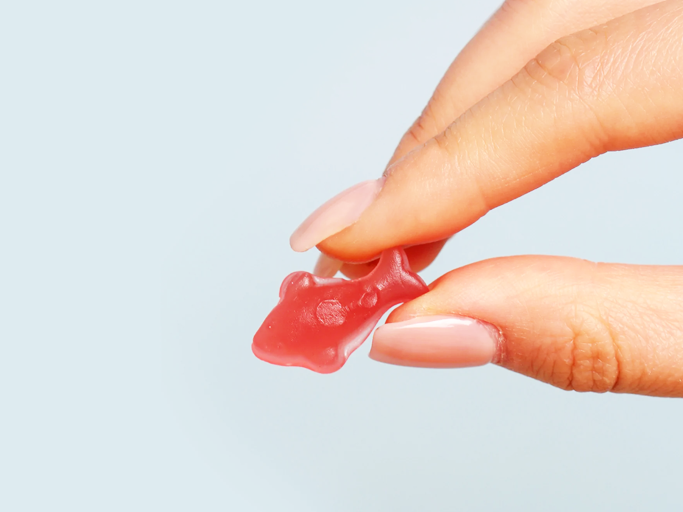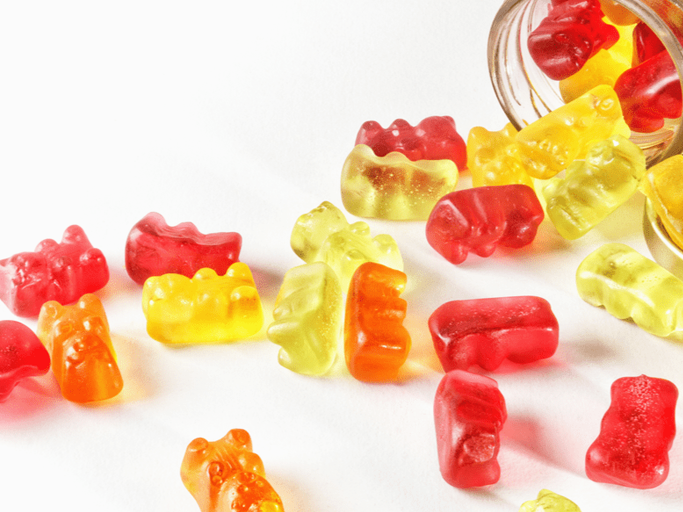Gummy candy is available in a huge selection of colors, sizes, and shapes. Additionally, it has a gelatinous quality, which simultaneously makes it fragile and fascinating. Gummy candy can be found in other consumable forms that need to be protected from the elements, even though it is typically used as an alternative to chewing gum. You can guarantee the lifespan and quality of your delicious treats for years to come by hardening your gummy candy.
To avoid losing money on unsuccessful product batches, hardening gummy candies are essential during the development phase. Why? Wouldn’t you desire a product that is consistently attractive and delicious? You might not believe it, but some folks don’t give a shit about how the gummy candy looks or tastes.
Gummy candies made in factories, often known as jelly gummies, licorice gummies, or chewy sweets, are among the most consumed sweets in the world. They are a tempting combination of mouthwatering fruit flavors and enjoyable chewing. But how do you harden gumdrops? Not so simple.

There are several different methods for hardening gummy sweets. Gummy candy can be made harder by incorporating additional gelatin or corn syrup into the mixture, or by substituting honey or agave nectar for the sugar. The secret is to make sure your candy contains enough moisture to prevent drying out as it hardens and to keep it supple and chewy when consumed.
Before you start boiling the mixture on the burner to harden gummy candy, make sure all of your ingredients are prepared and measured out. Then, whisk often for about 10 minutes as you cook the mixture over low heat until all of the ingredients have combined into one gooey mass. Remove from heat after 10 minutes, allow to cool for about 15 minutes, then pour into molds or onto parchment paper-lined trays (if using).
What Makes Gummies Harder
A couple of things have the potential to make gummies harder. To start, make sure the candy you use is appropriate for your recipe. Additionally, you need to change the way you cook the dish or add some extra ingredients. Finally, you should carefully follow the procedure and ensure that your gummies are cooked through.
The period at which this occurs varies depending on the type of gummies. Some are softer than others due to composition or texture variations. Pectin, a naturally occurring polysaccharide found in plants, is used to make “hard” gummies that are frequently employed as thickening agents in jams and jellies because they have greater flexibility than conventional gelatin.
The Right Ingredient Choices
It’s crucial to select elements that will make your gummy recipe as hard as possible if you want to get the most out of it. For instance, use gelatin rather than pectin or corn syrup if you want your gummy bears to be chewy enough to bite into. Making hard candies with these two ingredients does not turn out as well.
You Can Also Add More Gelatin
Adding more gelatin can help your gummies become even firmer than they already are. This is particularly true if you don’t have the time or patience to wait for your gummies to firm up overnight before eating them.
Common Problems
Sugar, water, gelatin, and flavoring are cooked together to create the popular treat known as gummy candy. The following are a few typical issues that can arise when producing gummy candy:
Cooling Temperatures
One of the most frequent problems that can prevent gummy candy from hardening is cooling temperatures. There are a few options available to you if you’re using a fresh recipe and need to fast cool the gummy candy.
To start, check to see if your pan is adequate for the quantity of candy you’re producing. A pan that is too small will quickly raise the liquid’s temperature, leading to an unevenly hardened product.
If you’re using an electric stovetop, think about cooling your pot off over a sink or a bowl of hot water. This will prevent it from overheating and prevent the surface of the sugar from prematurely evaporating or crystallizing.
If at all possible, immediately after your gummy candy reaches the temperature you want it to solidify, chill it down in an ice bath to ensure that leftover heat from whisking or stirring won’t cause it to rise above that temperature when you put it in molds or storage containers.
Reducing the humidity
As a candy producer, you are aware of how crucial it is to maintain the ideal humidity level for your gummy candy. Your product could fracture or crumble if it is too dry. If it’s too wet, it will be too soft or sticky to sell. However, how can you determine what the ideal humidity level is? Although getting close is somewhat of an art, there are various techniques you can employ.
Try to reduce the humidity in your home first. There is no way for you to control this fluctuation if you don’t have a humidifier or dehumidifier installed in your home (and who does?). If you have central heating or air conditioning running all day, this can cause the temperature in your home to change by several degrees throughout the day and night. Decrease the temperature in your home for a few hours before producing gummy candy. When you’re ready to manufacture gummies, your home’s humidity level will be lower overall, which will be closer to perfect production circumstances.
Suggested storage
Use a cold, dry location whenever possible to store hard candy. The sweets may get sticky and less tasty due to heat and humidity. Try storing a piece of your hard candy on top of your refrigerator for a day if you have any doubts about whether your storage space is appropriate for it. It is not secure to store there if it becomes sticky or begins to melt.
The most frequent problem with hard candy is that it gets sticky or gummy from being kept for an extended period. This happens when the candy’s sugar takes in moisture from the atmosphere. Your hard candy will then turn sticky and be challenging to remove from its original packaging.
Store your hard candy in an airtight container to avoid this happening. Avoid using packaging with holes since they will let moisture into the interior of your container.

By following these easy instructions, you can prevent the frequent problems that arise when hardening gummy candy.
1. Make use of premium ingredients. Gummy candies of lower quality might not be able to survive the strain of being heated and cooled repeatedly, and they’ll probably develop a sticky, gooey texture as a result.
2. Make sure there are no crumbs or trash on the table or countertop where you will be working and carefully clean your workspace. This will lessen the likelihood that unintentionally excess materials will accidentally be incorporated during the mixing procedure.
3. When producing your gummy candy, watch out for adding too much liquid. If you use too much, the product will be overly soft and won’t properly solidify.
4. Verify that your recipe calls for enough amount of powdered sugar. If there is not enough powdered sugar, the candy will be overly soft or clump together instead of properly hardening since the water will not evaporate as it should.
5. To prevent your gummy candies from being overly hot or cold during the cooking process, use an accurate thermometer when creating them. This is crucial because they might not solidify properly or might even melt altogether if they are too hot or cold.
6. Ensure that the temperature is appropriate for your sweet. It won’t properly solidify if you allow it to become too hot or too cold.
7. Adjust the gelatin proportions in your recipe. It will become brittle and quickly break if there is too much, while it is too little, it will become soft.
8. When creating your gummy candy, use the proper mold. One that lets air out while yet holding in enough moisture for a smooth texture and beautiful color is what you desire.
9. Before putting your gummy candy in an airtight container, make sure it is dried. Wet gummy candies will clump together and solidify into one huge block.
10. Avoid re-chilling gummy candies that have been softened by too much time in the refrigerator. The likelihood that moisture will leak into the candy increases the longer something is left in the refrigerator. Try taking it out of the container and leaving it on the counter overnight rather than placing it back in the refrigerator.
Producing hard candies is extremely similar to making traditional candies, and the components are almost identical. There are a few considerations, such as the need to monitor your candy closely and the necessity to utilize a lower temperature. This procedure ought to go well with the appropriate formula, careful consideration, and an ice bath ready to go when the time comes.
Gummies can generally soften quickly depending on light exposure and even heat. Consider adding a few drops of vitamin E or sunflower oil to the mixture for preparing gummies that will be stored for a long time or used in a range of applications. These ingredients will aid in maintaining the flexibility, flavor, and nutritional value of the completed product.
 One-Stop Solution Manufacturer of Gummy Making Machine
One-Stop Solution Manufacturer of Gummy Making Machine